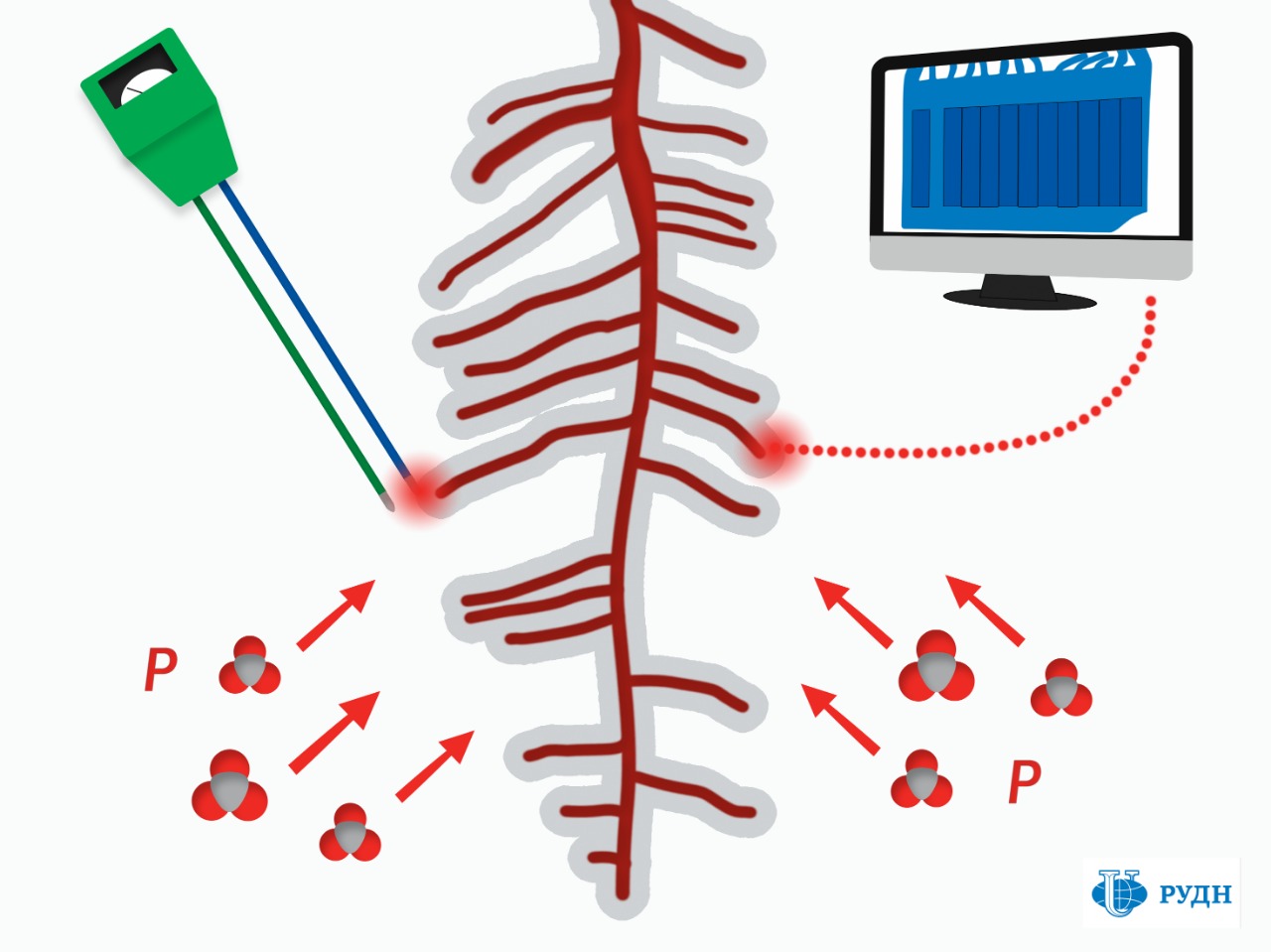RUDN University agrochemist visualised how plants get phosphorus from the soil
Phosphorus is necessary for most metabolic processes in plants, but it is often not available in the soil since it forms insoluble complexes, for example, with aluminium, iron, and calcium, and microorganisms ‘lock’ it in organic compounds. The deficiency of this element reduces crop yields, while organic and mineral phosphorus fertilisers can be expensive and have an adverse effect on the environment.
Yakov Kuzyakov, RUDN University soil scientist and the head of the University Center for Mathematical Modeling and Design of Sustainable Ecosystems, was the first to observe how plants adapt to the deficiency or absence of phosphorus in soil.
The researchers experimented with white lupine (Lupinus albus), a plant that develops a symbiosis with nodule bacteria, which help it absorb nutrients. Lupine seeds were germinated and sown in rhizoboxes: containers with loess limestone rock, dried and mixed with sand. Rhizoboxes were divided into three groups: those without phosphorus, with the addition of sodium phytate (one of important forms of phosphorus in animal manure), and with the addition of calcium dihydrogen phosphate.
The soil scientist controlled the state of plant roots and the surrounding soil in each container using an electrochemical method for studying the activity of enzymes called zymography. The method was necessary to visualise the activity of acidic and alkaline phosphatases, plant enzymes that break down phosphoric acid and help plants get phosphorus from it. Their activity depends on the development of plants and their interaction with symbiont microorganisms, as well as on the acidity of the soil. If the medium is acidic, then acid phosphatase “gets to work”, and alkaline phosphatase “turns on” in case of low acidity. In each of the rhizoboxes, there was also a fibre optic soil acidity sensor to observe how phosphorus availability affects this indicator.
Measurements were performed after 11 and 24 days, that is, before and after the formation of a developed root system. Prior to the formation of branches around the core root in a container with a phosphorus deficiency, acid phosphatases were increasingly active, the rhizosphere (the root growth zone) expanded, and the soil acidity increased. That was due to the fact that in the absence of phosphorus the roots of plants began to release hydrogen ions — protons, which increased the acidity of the soil. The increase in acidity, in turn, contributed to the work of acid phosphatases, which release phosphorus. This did not affect the work of alkaline phosphatases.
After the branched root system had formed, the zone where the presence of enzymes was detected, increased, and because of that the soil volume from which the plant tried to extract phosphorus increased as well. Therefore, lupine no longer had to emit so many protons, and the acidity of the soil became average. As a result, the activity of acid and alkaline phosphatases became approximately similar. So, in the first experimental rhizobox, i.e. the one with the phosphorus deficiency, lupine “invested” energy not in the growth of aboveground shoots, but in the growth of roots, which created a large area of enzyme activity for 24 days.
In the second rhizobox, where sodium phytate had been added prior to the formation of branch roots, decreased activity of phosphatases and a smaller zone of the rhizosphere were observed. It was because under these conditions phytates were converted to phosphorus accessible to plants and lupine did not experience the deficiency. Therefore, the roots emitted fewer protons, and the acidity was not especially high.
A similar picture was observed in the third rhizobox, the one in which calcium dihydrogen phosphate had been added. However, the degree of enzymatic activity, both acidic and alkaline, in the rhizosphere of the third sample was higher on the 24th day than in the other two. This was due to the fact that a sufficient amount of phosphorus stimulates the growth of plants and the release of carbon into the soil, and because of that there are more products that roots secrete into the rhizosphere after calcium dihydrogen phosphate is added, and they contribute to the growth of soil microorganisms and the synthesis of enzymes.
The study showed that the availability of phosphorus in the soil, root morphology, enzyme activity, and soil acidity are interrelated. The use of the two methods, i.e. zymography and acidity measurements, made it possible for the first time to trace this relationship. It turned out that with the development of the root system, tap roots lose their importance for the mobilisation of phosphorus. Lack of phosphorus stimulates plants to acidify the rhizosphere and activate acid phosphatases, meanwhile low acidity stimulates roots and microorganisms to produce less acid phosphatase. And since the acidity of the soil changes during the development of the root system, acid phosphatase shows a strong temporary variability in its contribution to lupine nutrition by phosphorus. Alkaline phosphatase, on the other hand, provides more stable mobilisation of phosphorus during the entire period of growth of the root system of the plant.
The article in the Soil Biology and Biochemistry
Sergey Ivanov, a scholar from St. Petersburg, has been named the first winner of RUDN University’s International Prize for Scientific Achievements in Mathematics, worth 5 million rubles.
Products derived from microalgae represent a cutting-edge development in the field of bioeconomy. The potential of this biological resource was discussed at the international research seminar “Foundations for a Green Sustainable Energy”, part of the BRICS Network University’s thematic group on “Energy”. The event was organized by the Institute of Ecology at RUDN University.
Ambassadors of Russian education and science met at a conference in RUDN University to discuss how they can increase the visibility of Russian universities and research organizations in the world, and attract more international students in Russia.
